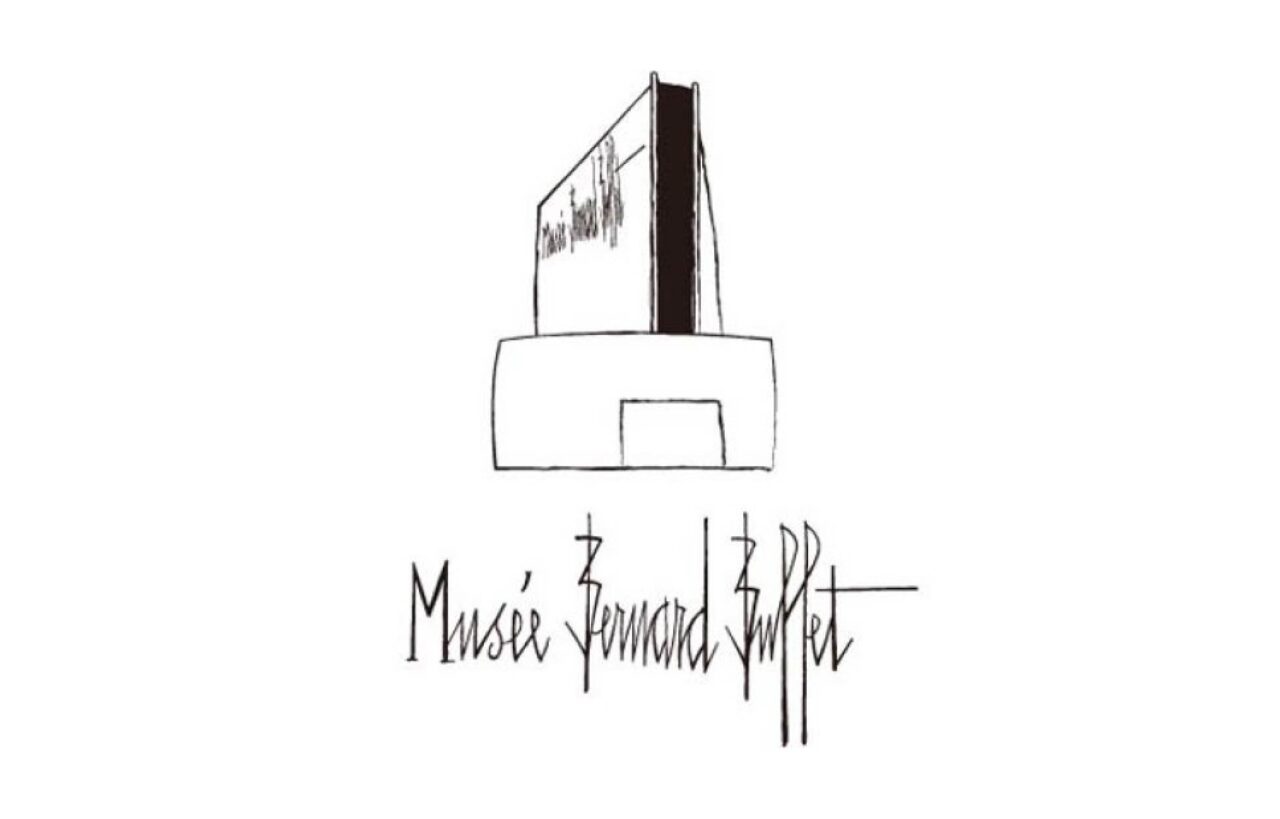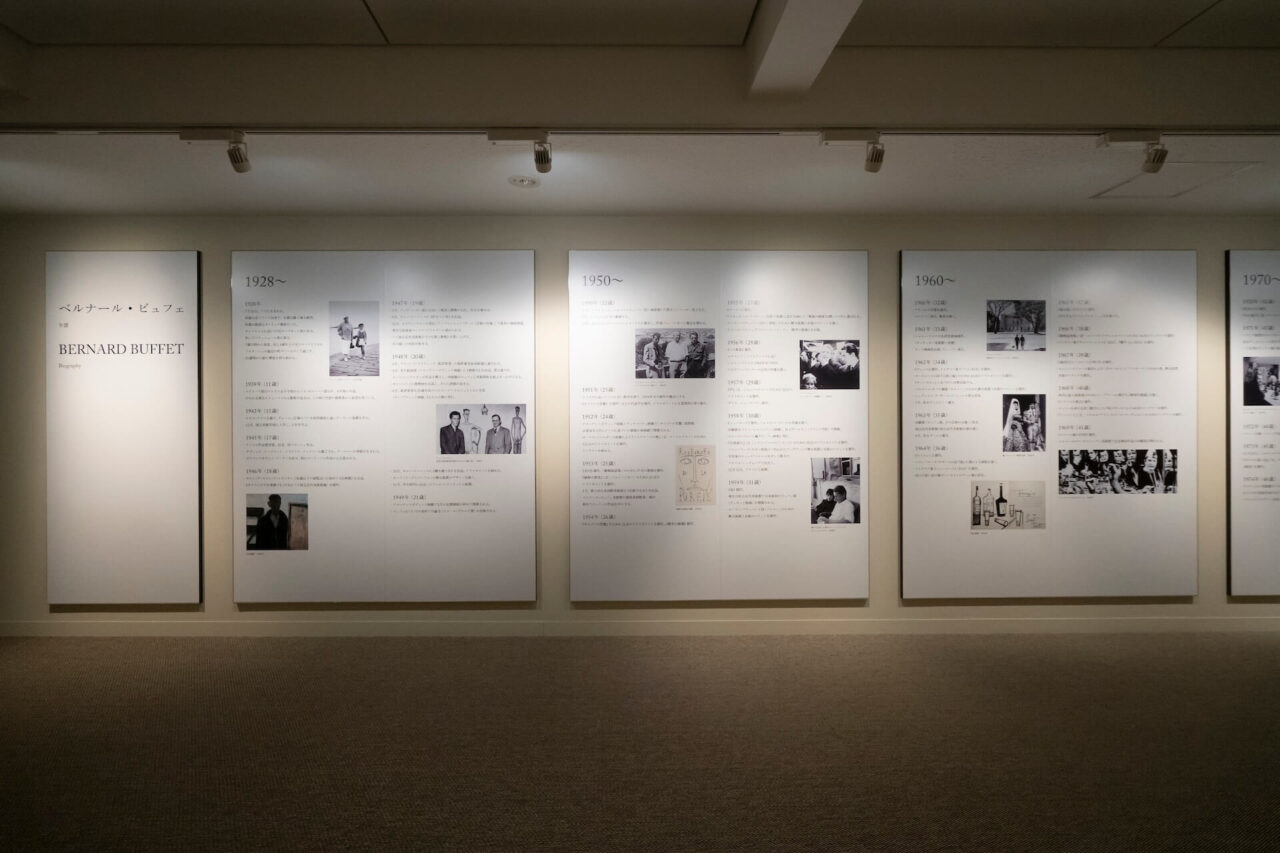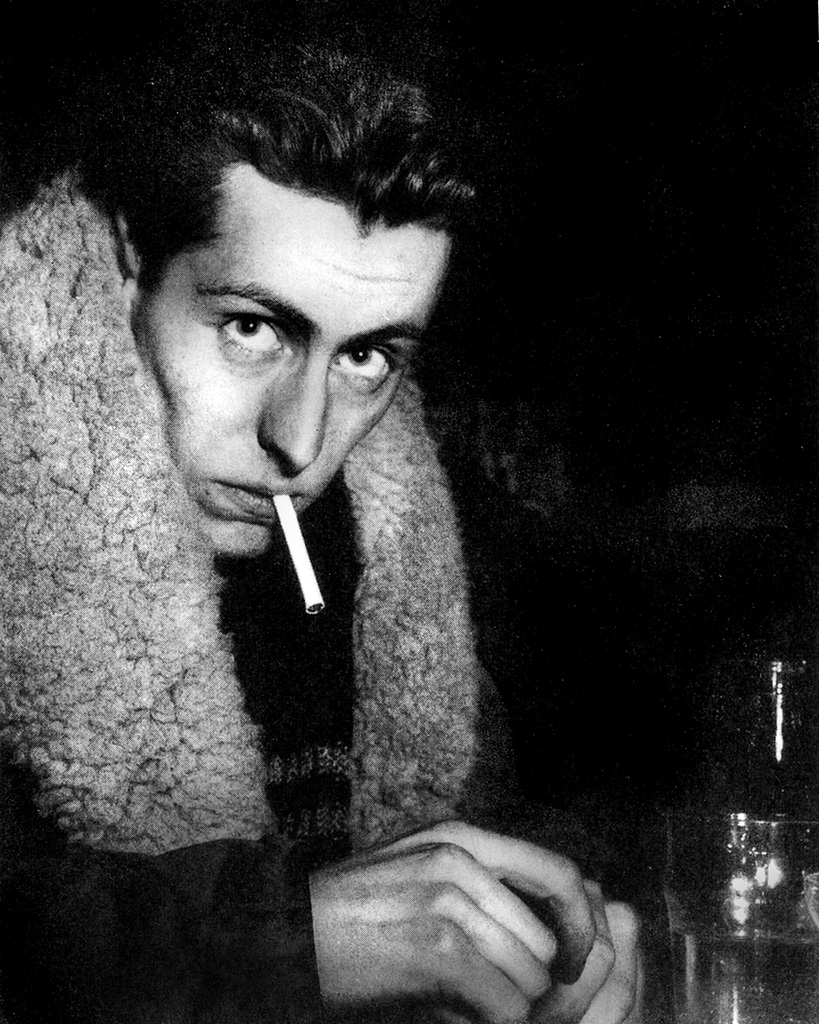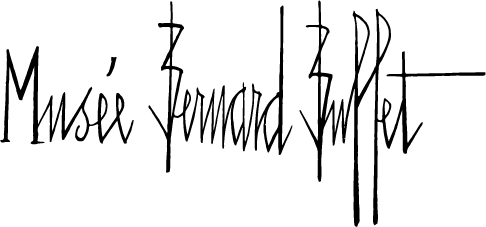
Biography

Biography

About
Bernard
Buffet
Bernard Buffet (1928-1999) aroused worldwide public interest and passion by describing the anxiety and the void after World War II, with his so personal use of black lines and restrained colours. His art depriving his figures of all vanity was the focus of attention, and quite controversial. It encapsulated both Sartre’s existentialism and Camus’s view of the absurd, which had a strong influence on contemporary youth. This made him a standard bearer of post-war figurative art. Buffet belonged to a group – “L’Homme Témoin (The Witness)” – along with Bernard Lorjout and André Minaux, considered as a new school of figurative painting. In the mid 1950s, Buffet’s work was often presented in Japan, where the popularity of abstract painting was at its highest. Buffet impressed many Japanese artists with the strong expression and the straight black lines characteristic of his works. More than half a century has passed since, but Buffet’s work still makes its presence and influence strongly felt in today’s art.
Buffet used to say “The only thing I can do is paint,” and “I could bury myself in paintings”. He dedicated his entire life to painting. Throughout his life, there was a woman who kept influencing him. In 1958, Buffet married Annabel at the age of 30. He was fascinated by the fertility of her talent and expressions which inspired him to try various styles of representation. It was in that period that he started to leave his deliberately monotonous palette and use a wide variety of colours. From then on, his paintings also gained cheerfulness. Annabel was his lifelong Muse. He left many paintings in which she figures as model.
Buffet loved our museum, which he and Annabel honoured with 7 visits in their lifetime. His last visit was in May 1996 for the opening of the Gallery devoted to his engravings, upon which occasion he left these words:
“I want you to have a dialogue with my paintings by pure affection. Painting is not something to talk about or to analyse; it is something just to feel. A hundredth of a second is enough to judge a painting.”
ベルナール・ビュフェ年譜
| 1928年 | 7月10日、パリに生まれる |
| 1943年(15歳) | ナチス・ドイツ占領下、ヴォージュ広場のパリ市夜間講座に通う。 国立美術学校の入学試験に合格し、12月からユージェーヌ・ナルボンヌ教室で学ぶ。 |
| 1945年(17歳) | アトリエ作品賞受賞。母ブランシュ死去。《キリストの降架》(パリ国立近代美術館所蔵)などの本格的な作品を生み出す。 |
| 1946年(18歳) | サロン・デ・モワン・ド・トランタン(30歳以下の人たちの展示会)に初めて《自画像》を出品。 |
| 1947年(19歳) | アンデパンダン展(風景画と静物画の2点)とサロン・ドートンヌ(《肘をつく男》)に出品し、注目され始める。 カルチェ・ラタンの書店「アンプレッションダール(芸術の印象)」で最初の個展。 |
| 1948年(20歳) | 6月、批評家賞を受賞(サン・プラシッド画廊、《ふたりの裸の男》)。以後、世界各地で個展が開催される。 ドライポイントを始める。 |
| 1950年(22歳) | プロヴァンスに滞在し、小説家ジャン・ジオノや詩人ジャン・コクトーと親交を深める。 |
| 1951年(23歳) | 代表作《キリストの受難》三部作を制作(このうちの2点は当館所蔵)。 |
| 1952年(24歳) | リトグラフを始める。 |
| 1953年(25歳) | 第2回日本国際美術展に《化粧する女》を出品(以後第6回展まで出品)。 |
| 1955年(27歳) | 『コネッサンス・デ・ザール(芸術の知識)』誌が企画した「戦後の画家10傑」の1位に選ばれる。 |
| 1958年(30歳) | アナベル(シュウォーブ・ド・リュール)と結婚。 |
| 1959年(31歳) | 神奈川県立近代美術館で、日本最初のビュフェ展(デッサンと版画)が開催される。 |
| 1963年(35歳) | 回顧展「ビュフェ展、その芸術の全貌」が東京の国立近代美術館と国立近代美術館京都分館で開催される。 |
| 1973年(45歳) | 11月25日、静岡県長泉町にベルナール・ビュフェ美術館が創設される。 |
| 1974年(46歳) | ヴァティカン法王庁美術館のアパルタメント・ボルジアに「現代宗教美術コレクション」の一部として《ピエタ》《受胎告知》などの大作6点が収められる。 |
| 1975年(47歳) | フランス・アカデミー会員となる。 |
| 1980年(52歳) | ベルナール・ビュフェ美術館の招待により初来日、関西方面を取材旅行する。 |
| 1988年(60歳) | 12月9日、コレクションの増加に伴い、新館が増設される。 |
| 1991年(63歳) | ロシアのエルミタージュ美術館とプーシキン美術館で大回顧展。 |
| 1993年(65歳) | レジオン・ドヌール勲章のオフィシィエの称号を受ける。 |
| 1995年(67歳) | 日本を縦断する大規模なビュフェ展が開催される。 |
| 1996年(68歳) | 5月20日、ベルナール・ビュフェ美術館に版画館が増設される。 ビュフェ夫妻は落成祝賀に臨席。ビュフェの来館は7回目、これが最後の来館となる。 |
| 1999年(71歳) | 10月4日、ボームの自宅にて逝去。 12月15日、ベルナール・ビュフェ美術館で、アナベル夫人が臨席し、ベルナール・ビュフェ追悼式を行う。 |
| 2000年 | 「死」展(モーリス・ガルニエ画廊)。8月〜2001年12月、全国6ヶ所を巡回する「ビュフェ追悼展」開催。 |
| 2005年 | 8月3日、アナベル夫人逝去。 |
| 2008年 | 「ベルナール・ビュフェ」展(フランクフルト、MMK)。 |
| 2009年 | 「ベルナール・ビュフェ没後10年」展(ベルナール・ビュフェ美術館)。 「ビュフェとアナベル」展(横浜そごう美術館、いわき市立美術館)。 |

Bernard Buffet Museum
〒411-0931 515-57 Clematis no Oka, Higashino, Nagaizumi-cho,Shizuoka 411-0931 Japan
Closed : Wednesdays (When a national holiday falls on a Wednesday,
the Museum is OPEN and is closed on the following day), New year holidays
